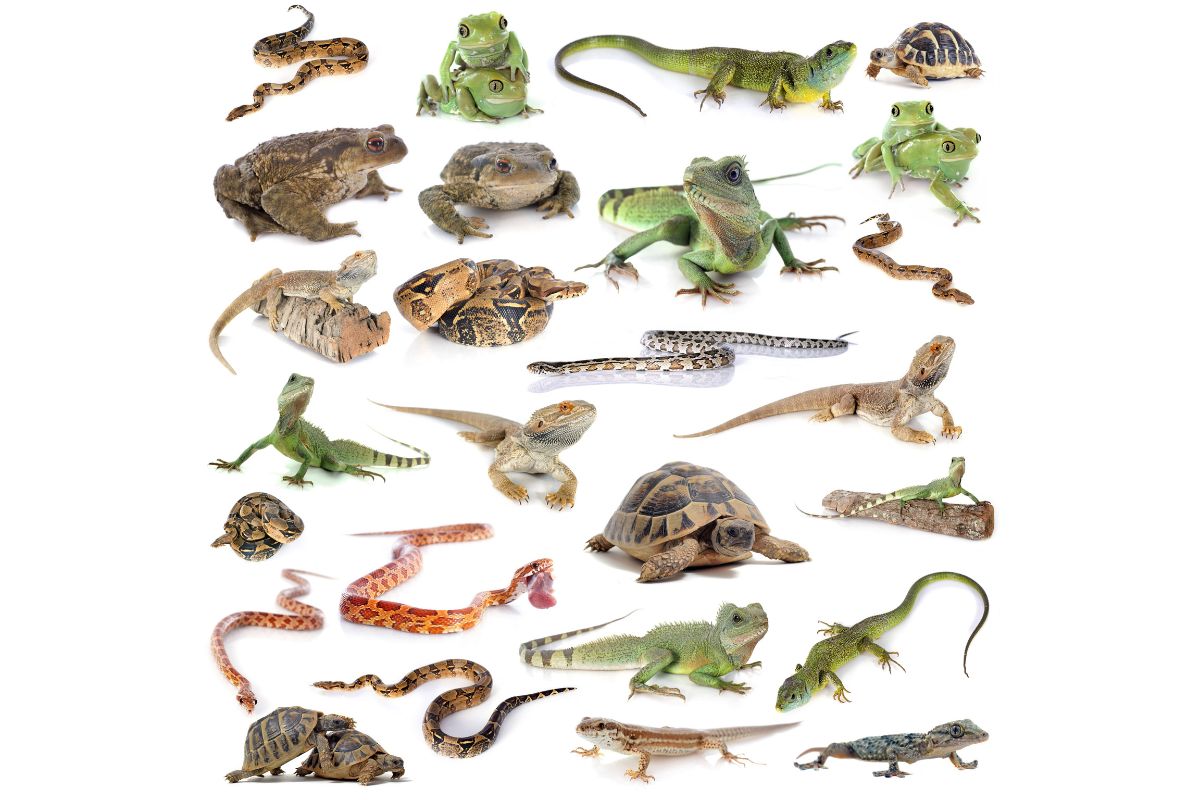What is Veterinary Anatomy?
Veterinary anatomy is the field of science concerned with the body structures and functions of animals. It is one of the core subjects for any veterinary-related degree and is essentially the fundamental knowledge that the veterinary clinical practice is based on.
















6 of The Best Veterinary Anatomy Books to Own
Dyce, Sack, and Wensing's Textbook of Veterinary Anatomy (5th edition)
This 864-page veterinary anatomy book has gained long-standing popularity amongst veterinary students over the years, and there are reasons for that.
It starts with Part 1: a preliminary chapter introducing the readers to topographic anatomy (layering structures within the region: skin, fascia and fat, bone, muscle, blood vessels, lymphatic system, and nerves).
The following nine chapters cover this topic in further detail from a systemic approach. Nine chapters focus on the topographic anatomy of nine organ systems (musculoskeletal, digestive, respiratory, urinary, reproductive, endocrine, cardiovascular, nervous, sense and integument).
Part 2 through part 6 is devoted to the species-specific topographic gross anatomy of dogs, cats, horses, ruminants, pigs, birds, and camelids.
The 5th edition includes a camelid chapter, additional figures, highlighted text boxes, and a reader-friendly comprehension check at the end of each chapter.
The book is available in both hardcover (new or used) and eBook for purchase or renting.
The contents of this book align well with a framework of many veterinary anatomy and physiology classes that offers a systemic approach, which makes it a great study material to accompany students to their anatomy wet labs.
Pros
- Covers commonly seen species
- Consistent with a veterinary anatomy curriculum
- In-depth topographic and systemic anatomy
- Comprehension check
- Hardcover and eBook options available
Cons
- Shorter chapters for birds and camelids
- Camelid species may not be considered as a commonly-seen species
- No exotic animal sections
Color Atlas of Veterinary Anatomy, Volume 3, The Dog and Cat (2nd edition)
This book is part of a three-volume set covering ruminants (Volume 1) and horses (Volume 2). The main contributors of this book include experts in the veterinary anatomy field: Stanley H. Done, Peter C. Goody, Neil C. Stickland, Susan A. Evans, and Elizabeth A. Baines.
The book offers ten chapters of comprehensive anatomical contents. Each chapter is dedicated to one specific body region and focuses on topographic and functional anatomy within the region (the first nine chapters on dogs, then the final chapter on cats).
In the new edition, additional full-colored photos and supportive drawings, radiographic images, and CT scan images facilitate understanding the elements and the learning objectives that can otherwise be lost in translation through an overwhelming number of words per page.
The new edition also offers online learning resources, including over 60 interactive questions and multi-choice quizzes, so that the readers have opportunities to review/revise learned materials. The book is currently available only in the paperback version for purchase (new or pre-owned) or renting.
The ‘one region per chapter’ style makes this book ideal for those who wish to take a regional approach to study anatomy rather than taking a systemic approach where the anatomic study of the whole body is based on organ systems (e.g., respiratory, cardiovascular, digestive, reproductive, etc.).
One thing that stands out the most about this book is the authors’ choice to have a counterpart drawing for each photo in the book. In addition, they added diagram legends in the drawing and kept the original image ‘label-free.
Photos like radiographic images can be challenging to identify structures due to their color scheme and contrast. Therefore, having legends in these photos is often not as effective as one hopes and creates more confusion.
Having a clarified diagram version of the photo with legends is a clever idea to ensure the original photo to be appreciated to the full extent and interpreted correctly by the readers.
Pros
- In-depth descriptive topographic/functional anatomy
- Each chapter focuses on one region (regional approach)
- Full-colored images
- The unlabelled images come with labeled counterparts
- Online learning resources (over 60 interactive questions and multi-choice quizzes)
- Exclusive to canine and feline anatomy
Cons
- High word count per page make it busy-looking and can be overwhelming to the readers
- Some labeled diagrams and drawings are overcrowded with legends
- Available only in paperback
Clinical Anatomy and Physiology for Veterinary Technicians (3rd Edition)
Suppose you are a veterinary technician, a veterinary nurse, or a student enrolled in a veterinary technology/nursing program. In that case, you must be familiar with McCurnin’s Clinical Textbooks, and perhaps you are a fan of McCurnin’s series.
Great news for you! You are about to become a fan of this book also. If you have not heard of McCurnin textbooks, we are confident that you will search for those books after reading this one.
This book is written by Tom Colville, a veterinarian who has aided in creating the veterinary technology program at North Dakota State University, and Joanna Bassert, the lead educator of the veterinary technician program at Manor College and the main editor of all of the McCurnin textbooks.
The book consists of 22 chapters covering biochemistry, cell anatomy, physiology, systemic anatomy at gross and microscopic levels, and physiology of related organ systems. In addition, the book covers canines, felines, equine, ruminants, avians, amphibians, and reptiles.
In the new edition, the cell anatomy and the cell physiology that were compiled into one cell chapter in the previous edition are now allocated a chapter each. In addition, the ‘Immune system’ section also has its own chapter after diverging from the ‘Blood and lymphatic system’ chapter.
Furthermore, this edition is equipped with the following new features:
- Evolved online learning program that offers chapter summaries, crossword puzzles, mini-tests, and answers.
- Vocabulary fundamentals, chapter outlines, and a list of objectives at the beginning of each chapter.
- Clinical application boxes in each chapter.
- ‘Test yourself’ revise boxes in each chapter.
The book is available in Kindle, paperback, and spiral-bound versions for purchase or renting. The book truly delivers what the title has promised. It is definitely a book that will stay on the shelf for a long time and will carry you throughout your career.
Pros
- Student-oriented materials (highlighted contents, chapter summaries, clinical application boxes, full-colored illustrations and images, vocabulary lists).
- Online learning resources.
- Brief, descriptive, informative texts.
- Detailed anatomy and physiology of small animals, equine, ruminants, avian, amphibians, and reptiles
- Available in various versions (Kindle, paperback, spiral-bound)
Con
- Pricey
Introduction to Animal and Veterinary Anatomy and Physiology (4th edition)
This preliminary book takes the readers through cell biology topics, gross and microscopic systemic anatomy, and physiology of related organs of dogs, cats, small mammals, horses, domestic farm animals (cow, sheep, and pigs), birds, reptiles, and fish.
A summary section at the beginning of each chapter highlights the key points, and clinical application sections within chapters provide ‘theory-to-practice examples. The use of plain language and multiple images makes it informative yet easy to understand without simplifying the contents.
This edition includes a chapter on domestic farm animals, which the previous edition was lacking. Also, its online learning platform is now equipped with new questions and quizzes and helpful self-assessment tools, and teaching aids to keep the readers on track.
The book is available both in eBook and paperback versions.
If you are an aspiring veterinary tech/nurse or embarking on a veterinary career path, this book may be just what you were looking for.
Pros
- Reader-friendly wording and diagrams
- Multiple microscopic images
- It covers a variety of species
- The appendix consists of self-assessment Q’s and A’s
- Online learning materials
- Affordable price
Cons
- Two-color diagrams
- Preliminary contents of veterinary anatomy and physiology
Veterinary Anatomy Flash Cards, 2e (2nd Edition)
Some people dig it, and others do not. Either way, flashcards are an alternative study tool that has been used in different fields of study.
Dr. Singh, a renowned anatomist, and an accomplished veterinary educator, recognized their potential as a teaching tool to memorize never-ending anatomical structures and their functions and created a set of 400 full-colored flashcards covering eight topics:
- The head and ventral neck
- The neck, back, and vertebral column
- The thorax
- The abdomen
- The pelvis and reproductive organs
- The forelimb
- The hindlimb
- Exotics
Each card has a question on the front and the answer on the back and is color-coded based on the section it belongs to, with a section and card number at the top. The flashcard covers dogs, cats, horses, cattle, pigs, birds, rats, rabbits, ferrets, guinea pigs, hamsters, chinchillas, gerbils, hedgehogs, lizards, snakes, chelonians, crocodiles, frogs, and fish.
This is available in Kindle and card version for purchase or rental.
If you are looking to improve your long-term retention of anatomical knowledge quickly and easily, why not give this flashcard set a go?
Pros
- It covers a variety of species
- Regional anatomy
- Colorful illustrations
- It comes with a small metal ring to hold the cards together
- Portable
Cons
- No explanatory texts
- Histological and cross-sectional photos may be difficult to interpret for those who are not used to looking at them
- Large cards (Not exactly a pocket-sized solution)
- The Kindle version does not entirely give an authentic ‘flashcard’ feel.
Atlas of Normal Radiographic Anatomy and Anatomic Variants in the Dog and Cat (2nd Edition)
Radiography is a standard veterinary diagnostic procedure that is used daily. Yet, it is the one that requires a proficient level of radiographic knowledge to perform a safe and effective procedure, produce high-quality images, and accurately interpret the images.
This atlas covers positioning and exposure technique and image interpretations of each anatomical region of dogs and cats of different sizes (normal, overweight, underweight), age (pediatric, juvenile, adult, geriatric), and breed.
All of the images used in the book are real-life clinical patients instead of cadavers, as the author wanted to ensure the readers appreciate variations applicable in clinical situations.
New features in this edition include additional CT and 3D images, oblique view images, breed-specific images, and access to an online learning platform called Companion that offers over 100 questions and other CT images.
The book is available in Kindle (purchase or rental) and hardcover versions (new or used). The hardcover version of this edition is smaller than its predecessor.
Pros
- Variations (size, age, and breed-specific)
- Unlabelled radiographic images come with labeled counterparts
- Good references
- Handy size
- Tables and diagrams of skeletal changes according to age
Cons
- Pricey
- Complex and specialized (Not a preliminary book)
The Key Takeaways
There you have it! We hope you are looking at your bookshelf or tablet to make more space for these books or that it least made you aware of various types of veterinary anatomy books currently available on the market.
Personally, Clinical Anatomy and Physiology for Veterinary Technicians would be our first pick. We were very impressed with the extent of effort the authors made to ensure the book is comprehensive and student-oriented, such as using detailed, colorful diagrams, high-quality photos, objective lists, an extensive list of references, clinical application boxes using real-life veterinary scenarios, and online learning materials.
These features make it an excellent book for learning, revising, and referencing for first-year students, final-year students, working professionals, and even experts.
| # | Preview | Product | Price | |
|---|---|---|---|---|
| 1 |
  |
The Young Scientists Club Future Veterinarian… | $14.99 | Buy on Amazon |
| 2 |
  |
Introduction to Veterinary Anatomy and Physiology… | $36.53 | Buy on Amazon |
| 3 |
  |
Veterinary Anatomy Coloring Book | $30.56 | Buy on Amazon |
| 4 |
  |
Blue Tree Publishing Dog Anatomy Poster Veterinary… | $26.99 | Buy on Amazon |
| 5 |
  |
Introduction to Animal and Veterinary Anatomy and… | $47.31 | Buy on Amazon |





